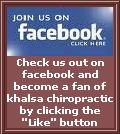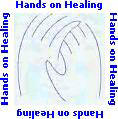

| Home | Dr. Mha Atma's Health Newsletter | Ideas for Good Health | Patient of the
week |
| >About |
| >Meet The Doctor |
| >Meet The Team |
| >Testimonials |
| >Hall of Fame |
| >Upcoming Schedules |
| >Contact Us |
| >New Patient Forms |
| >Exercises |
| >Links To Better Health |
| >Videos |
| >What is Chiropractic? |
| >Why go to Chiropractor? |
Healthy Life Newsletter February 2016
http://www.toyourhealth.com/mpacms/tyh/article.php?id=2186
Take a Stand Against Obesity
Obesity is raging out of control in the United States and worldwide, due in large part to processed foods, sedentary lifestyles and other factors that keep us in the fat-accumulating, rather than fat-burning, mode. But did you know there's an easy way to get you started on the road to good health, regardless of your current weight? You can do it right now while you're reading this article, if you're not doing it already: stand up.
According to recent research from the American Cancer Society, people who stand for at least 25 percent of their day are less likely to be obese than those who stand for less time, and the numbers are significant: For men, standing 25 percent of the time reduces obesity risk by 32 percent; the risk reduction rises to 59 percent for men who spend 50 percent of their day standing. For women, the risk reductions are similar: 35 percent lower risk of obesity when standing 25 percent of the day; 47 percent risk reduction when standing for 50 percent of the day. Interestingly, standing for 75 percent of the day reduced the risk even further in women (57 percent), but not in men.
The message is simple: More means less! In this case, more standing means less risk of obesity.
---------------------------
Unhealthy diet shrinks your brain
Consumption of an unhealthy Western diet characterized by meat, hamburgers, chips, and soft drinks, may reduce the volume of the left hippocampus, whereas a healthy diet of fresh vegetables and fish may increase hippocampal volume.
In a study of more than 250 individuals, investigators found that during a period of 4 years, there was a difference of more than 200 cubic millimeters in hippocampal volume between individuals who ate a healthy diet and those who consumed an unhealthy diet.
"To our knowledge, this is the first human study to demonstrate associations between diet and hippocampal volume concordant with data previously observed in animal studies," investigators led by Felice N. Jacka, PhD, associate professor in the Division of Nutritional Psychiatry Research at Deakin University, Geelong, Australia, and president of the International Society for Nutritional Psychiatry Research, write.
"These findings suggest the potential for dietary interventions to promote hippocampal health, decrease age-related atrophy, and prevent negative health outcomes associated with hippocampal atrophy," they add.
Dr Felice Jacka
The research was published online September 8 in BMC Medicine.
---------------------------
http://www.toyourhealth.com/mpacms/tyh/article.php?id=1330
Prescription Overload
Despite increasing evidence and public awareness of the dangers of prescription drugs, both in terms of side effects and in some cases, the potential for abuse, prescription drug use continues to escalate. According to a study from the Harvard T.H. Chan School of Public Health, which compared data from 1999-2000 with data from 2011-2012 as part of the National Health and Nutrition Examination Survey (NHANES), 59 percent of U.S. adults reported prescription drug use in 2011-12, up 8 percent from 1999-2000. In addition, polypharmacy (use of five or more prescription drugs) increased from 8.2 percent to 15 percent as of 2011-12.
Perhaps more disturbing, of 18 drug classes utilized by at least 2.5 percent of the population, prescription drug use increased in more than 50 percent of those classes (11).
prescription - Copyright – Stock Photo / Register Mark
Drug classes showing increased use included antidepressants, muscle relaxants, proton-pump inhibitors ( used to reduce gastric acid, among other functions) and anti-hyperlipidemic drugs (used to combat high cholesterol).
Click here to read the abstract from this revealing study, and click here to review important questions to ask your doctor at every visit - including what to ask before filling a prescription.
---------------------------
http://www.lifecarechiropractic.com/blog/tylenol-linked-to-cancer/
TYLENOL LINKED TO CANCER?
by Dr. James Bogash
The long list of problems associated with pharmaceutical pain control never seems to get any shorter. NSAIDs have been linked to heart attacks, joint destruction, impotence (yikes!), dementia, liver damage, kidney damage, gut destruction, heart arrhythymias and probably more stuff I’m forgetting right now. Tylenol has clear associations with asthma in both adults as well as newborns whose mothers took Tylenol during pregnancy. Kidney and liver damage are on the list as well.
Now we can officially add ad almost doubled risk of some nasty hematological cancers. The bottom line is that, in general, even “safe” over the counter pain relievers have very serious potential side effects. Of course, this is where I must interject that chiropractic care has NEVER, to my knowledge, been linked with increased risk of cancer. We have, however, been accused of causing disc herniations, paralysis and strokes (all of which, by the way, either make no sense biomechanically or have been disproven statistically).
Because of this, I always find it funny how some people shy away from chiropractic care like the mere idea of in office treatment could cause some time of long term detrimental effect, but will pop ibuprofen or Tylenol without a single thought to the very real harms.
---------------------------
Side effects of statin drugs for the elderly may outweigh benefits
Cholesterol medication can be lifesaving for older patients, but that doesn't mean taking it is risk-free.
A new study found that while statins may prevent heart attacks and other heart disease deaths, they can also result in adverse effects for elderly patients.
The authors of this study used data from past research to estimate the effects of prescribing statins to all people aged 75 or older who don’t have heart disease.
They found that statin use would prevent thousands of deaths from heart attacks and heart disease. However, it would also increase rates of cognitive impairment, muscle damage and falls.
In an editorial about this study, Michael W. Rich, MD, of Washington University School of Medicine in St. Louis, wrote that “even very modest adverse effects attributable to statins tip the balance in the direction of harm.”
Lee Goldman, MD, of Columbia University in New York, led this study.
Statins lower cholesterol by preventing the patient’s body from making cholesterol. Some guidelines advise against statin use for elderly people due to side effects like tiredness, cognitive impairment and falls.
These side effects can cause disabilities and prevent older adults from carrying out daily tasks.
Dr. Goldman and team used data to predict the results of prescribing statins for all adults ages 75 to 94 years old.
They found that 8 million additional adults would be receiving the drugs. The new prescriptions would prevent around 105,000 heart attacks and 68,000 deaths caused by heart disease.
However, there would also be an increase in side effects specific to older adults that could overwhelm the potential benefits of using statins, Dr. Goldman and team said.
In his editorial, Dr. Rich argued that “the findings strongly support the view that when it comes to prescribing statins for primary prevention in older adults, less is more.”
The study and editorial were published April 20 2015 in the Annals of Internal Medicine.

